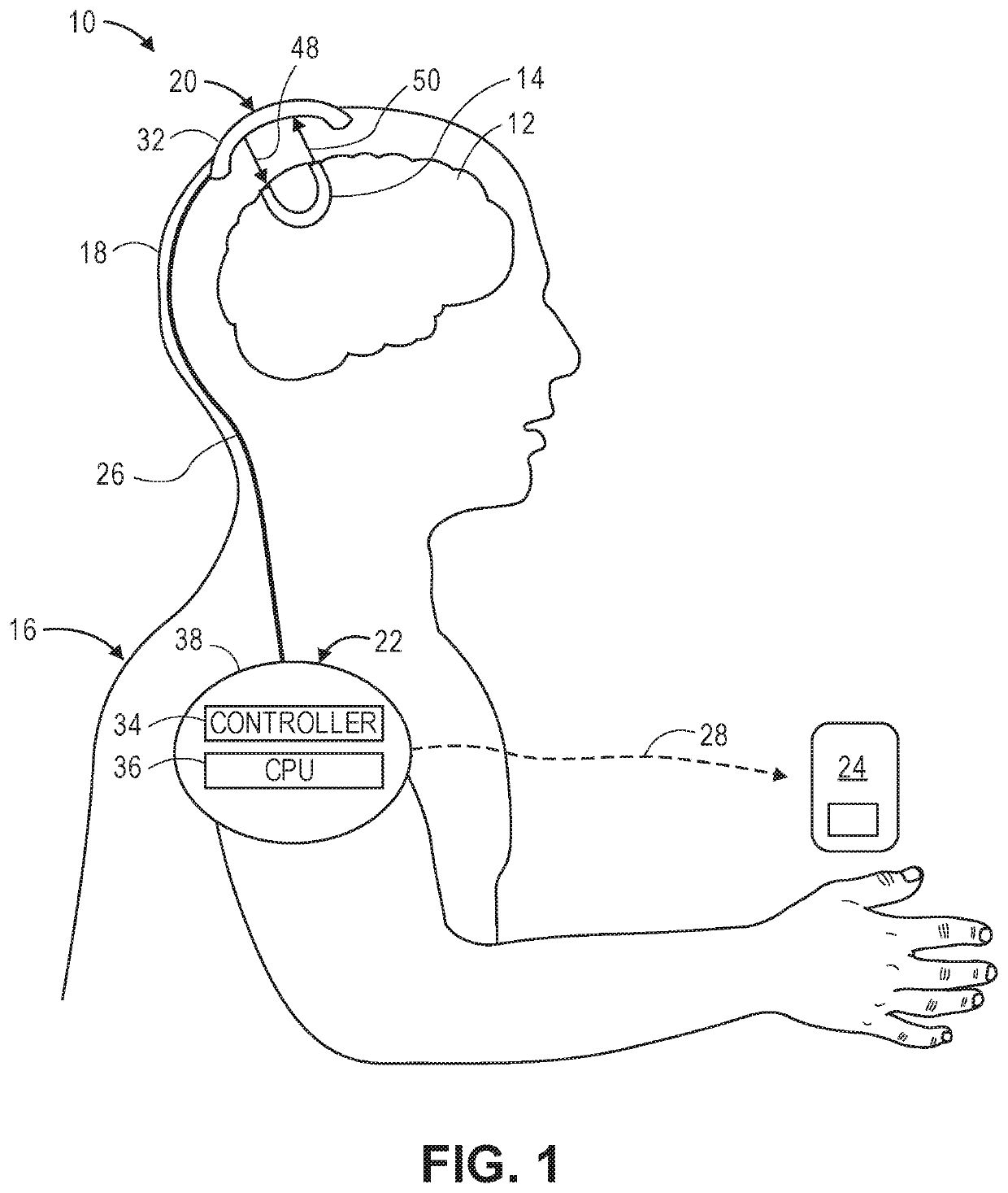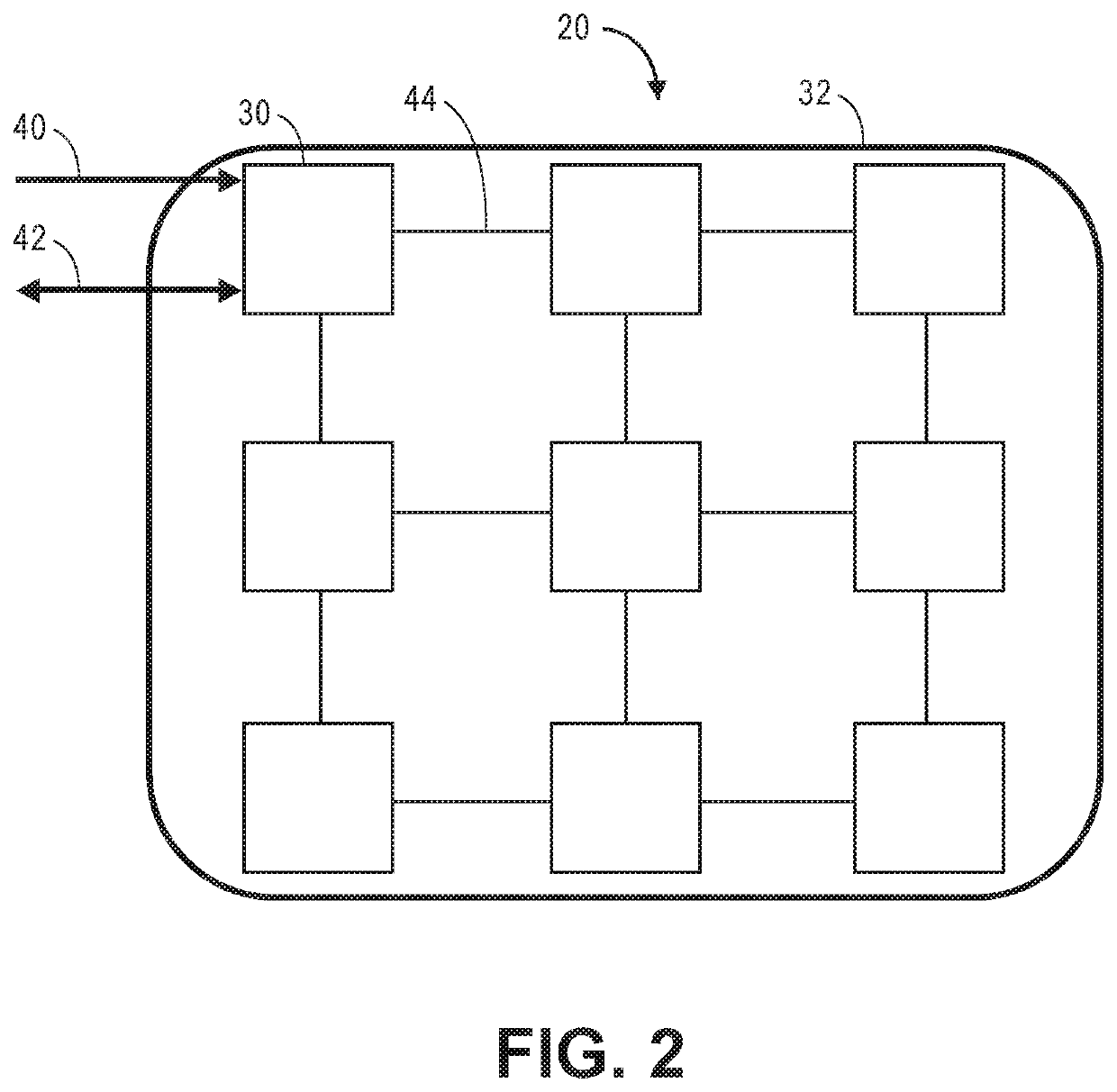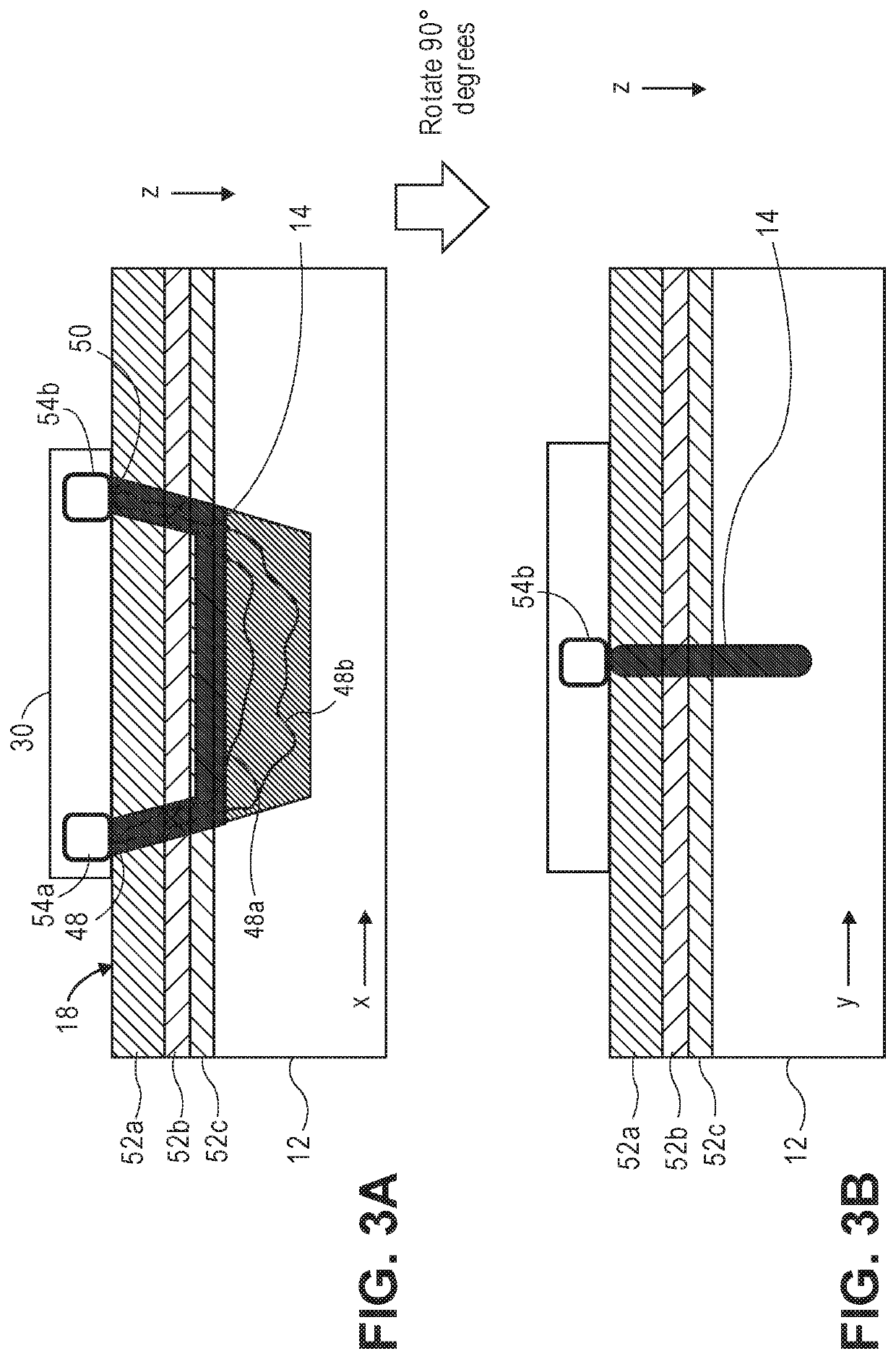Interferometric frequency-swept source and detector in a photonic integrated circuit
- Summary
- Abstract
- Description
- Claims
- Application Information
AI Technical Summary
Benefits of technology
Problems solved by technology
Method used
Image
Examples
Embodiment Construction
[0051]Referring first to FIG. 1, one embodiment of a non-invasive optical measurement system 10 constructed in accordance with the present inventions will now be described. The non-invasive optical measurement system 10 will be described as a swept-source holographic optical system (i.e., a system that mixes detected light against a reference beam in order to increase the signal-to-noise ratio (SNR) of the relevant signal), and in particular a Near-Infrared Spectroscopy (iNIRS) system. In alternative embodiments, the non-invasive optical measurement system 10 may take the form of other swept-source holographic optical systems, such as a Swept-Source Optical Computed Tomography (SS-OCT). In still other embodiments, the non-invasive optical measurement system 10 may take the form of a non-holographic optical system.
[0052]In any event, the non-invasive optical measurement system 10 is designed to non-invasively acquire physiological-encoded data (i.e., data representative of a physiolo...
PUM
 Login to View More
Login to View More Abstract
Description
Claims
Application Information
 Login to View More
Login to View More - R&D
- Intellectual Property
- Life Sciences
- Materials
- Tech Scout
- Unparalleled Data Quality
- Higher Quality Content
- 60% Fewer Hallucinations
Browse by: Latest US Patents, China's latest patents, Technical Efficacy Thesaurus, Application Domain, Technology Topic, Popular Technical Reports.
© 2025 PatSnap. All rights reserved.Legal|Privacy policy|Modern Slavery Act Transparency Statement|Sitemap|About US| Contact US: help@patsnap.com



